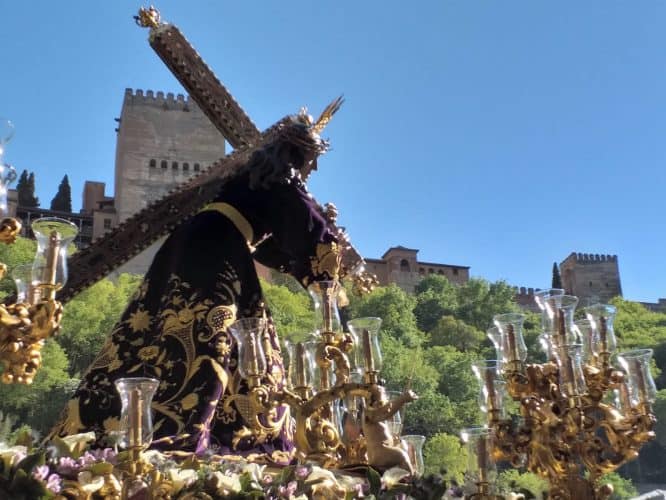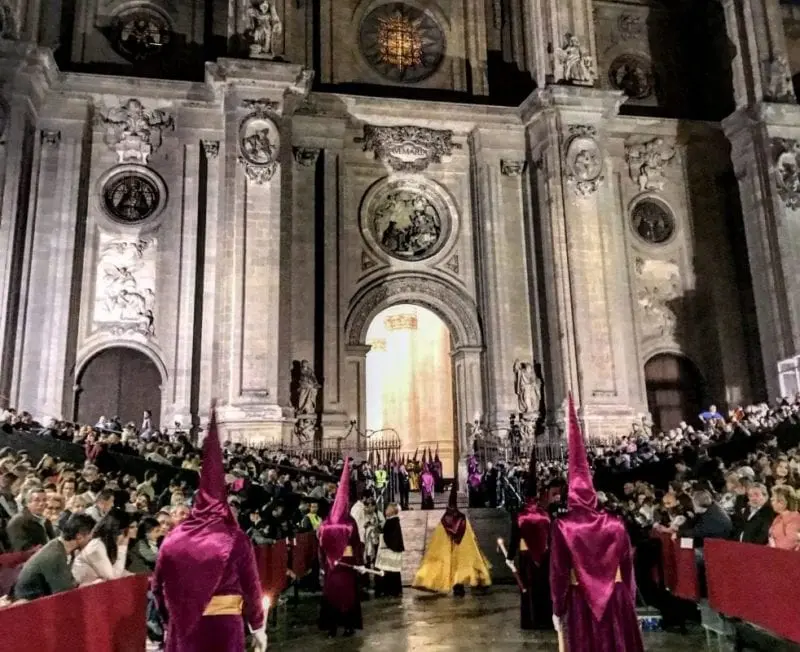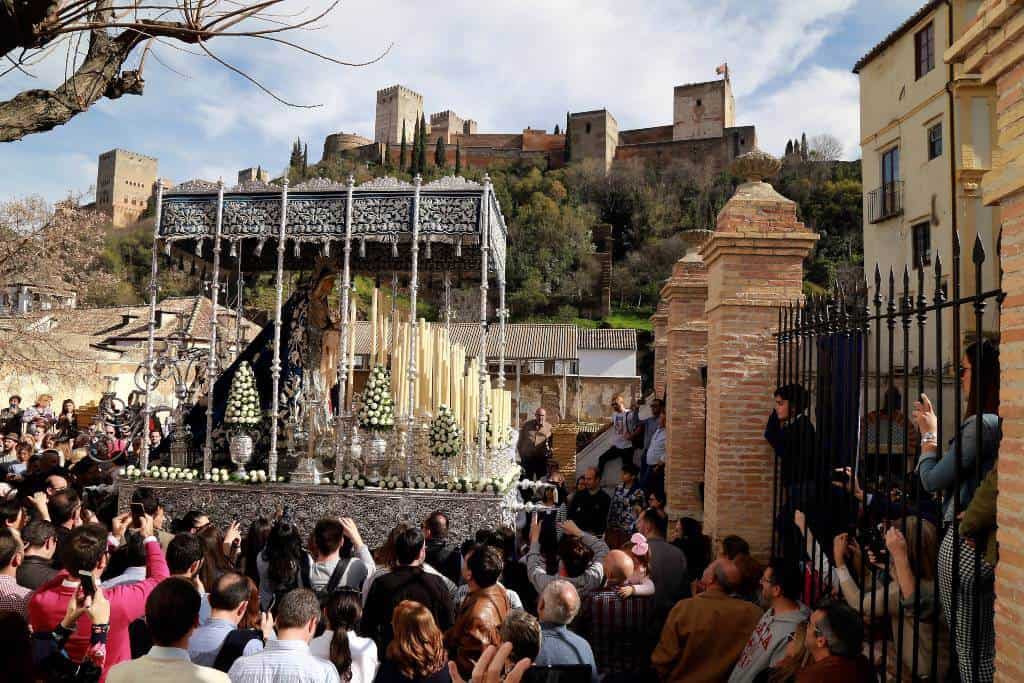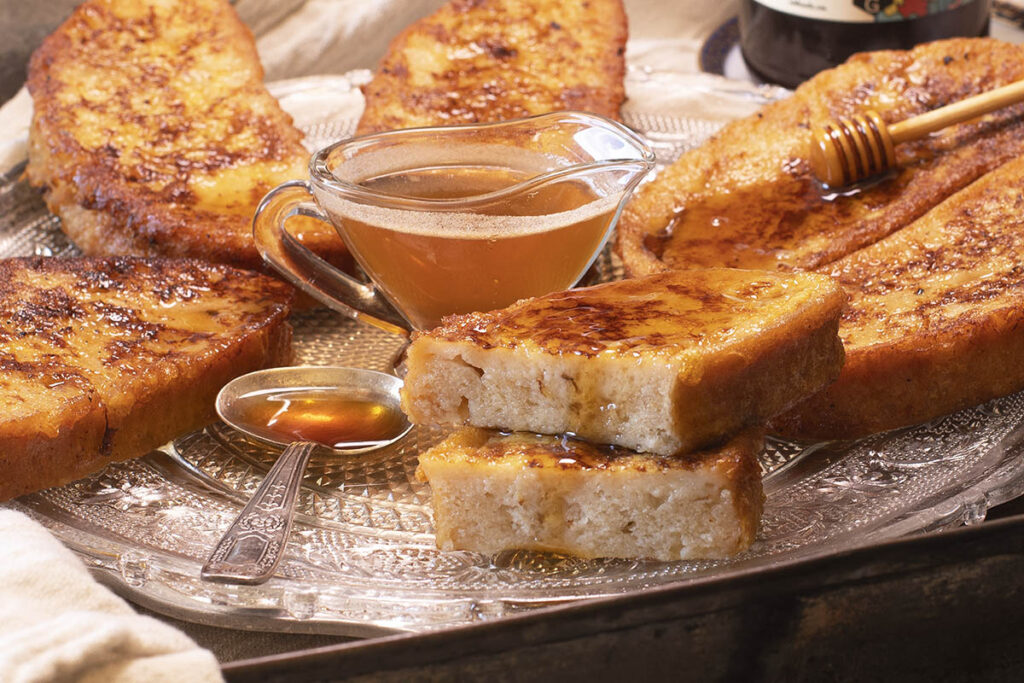- Home
- Listings
- Things To See & Do
- Car Hire
- News
- Properties
- What’s On
ES
Easter in Granada
Easter in Granada: A Spectacle of Tradition, Culture, and Religious Fervor
Easter in Granada, Spain, is a vibrant and deeply rooted cultural celebration that combines religious traditions with the rich cultural heritage of the region. Known as Semana Santa, or Holy Week, this annual event has been declared of International Toursit Interest and attracts locals and visitors alike, creating a unique atmosphere filled with religious processions, elaborate decorations, and a sense of community.
The festivities typically begin on Palm Sunday (Domingo de Ramos) and culminate on Easter Sunday (Domingo de Resurrección). Throughout the week, the city streets come alive with colorful processions that wind their way through historic neighborhoods. Participants, known as “nazarenos,” dress in distinctive robes and hoods, representing different brotherhoods dedicated to the observance of Holy Week.

The highlight of Semana Santa in Granada is the solemn and artistic processions featuring intricately crafted floats, or “pasos,” which depict scenes from the Bible, particularly the Passion of Christ. Some of the most renowned processions include those organized by the Hermandad de los Gitanos and the Hermandad de San Agustín, among others. These processions include statues of religious figures, such as the Virgin Mary and Christ, adorned with elaborate floral arrangements.

One of the most iconic locations for Semana Santa in Granada is the Cathedral. The processions pass through the narrow streets surrounding this grand structure, providing a breathtaking backdrop for the religious fervor and cultural richness on display. The atmosphere is further enhanced by the hauntingly beautiful music performed by marching bands, creating a sensory experience that captivates both participants and onlookers. On Holy Wednesday in the hills of Sacromonte, immense bonfires are lit as the Christ of the Gypsies passes by. These bonfires illuminate the “cuevas” (caves), homes, and dwellings of the gypsies, where lively flamenco gatherings known as “zambras” filled with authentic spirit take place. Another must see place is Realejo area, specially Santo Domingo square and Cristo de los favores in Campo del Príncipe square on Holy Friday. Another remarkable location is Albaicín neighbourhood. Set against the backdrop of the Alhambra, the Holy Week processions in Albaicín offer a unique and mesmerizing experience, blending religious fervor with the rich Moorish heritage of the region. You can admire 4 processions in Albaicin on Holy Thursday.

It’s important to note that Easter in Granada is not just a religious event; it’s a celebration that brings people together, fostering a sense of community and shared identity. The streets of Granada during Semana Santa are a testament to the city’s cultural richness and the deep connection between tradition and contemporary life. For anyone visiting Granada during this time, experiencing Semana Santa offers a unique opportunity to witness the convergence of religious devotion, artistic expression, and community spirit. Beware of crowded streets and traffic restrictions in Granada during Easter. The city buzzes with processions, making pedestrian-friendly zones. Plan accordingly for a unique experience. Visit our Parking areas page to find convenient parking lots and where to leave your car outside the city centre.
Traditional Easter food in Granada

In addition to the religious aspects, Easter in Granada also incorporates cultural events and traditions. Local markets and restaurants may offer special Lent traditional dishes made with cod and season vegetables, such as cod omellette, potaje de vigilia (hearty soup made with chickpeas, spinach, desalted cod, and other vegetables), puchero de Cuaresma) (stew that adapts to Lenten restrictions by incorporating ingredients such as cod, chickpeas, spinach, and potatoes), habas con jamón (broad beans with cured ham), berenjenas a la miel (aubergine with honey), artichokes, etc
Also, it is very popular to bake or buy traditional Easter week cakes such as “torrijas” (a type of French toast), roscos or rosquillas (doughnuts) and “pestiños” (honey-coated pastries), which are enjoyed during this time.
